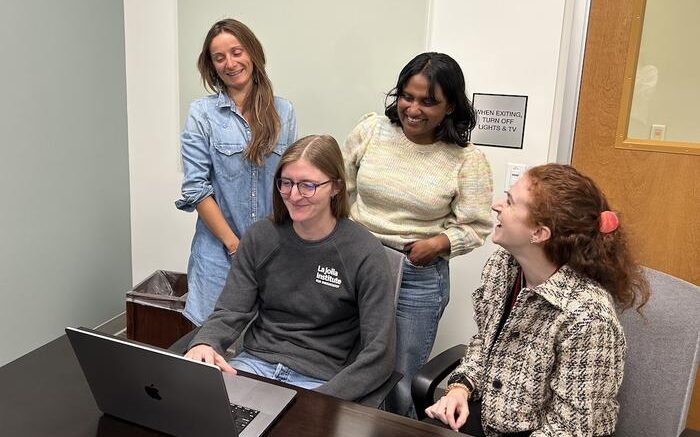Scientists at La Jolla Institute for Immunology (LJI) recently published the results of a competition that put researchers to the test. For the competition, part of the NIH-funded Computational Models of Immunity network, teams of researchers from different institutions offered up their best predictions regarding B. pertussis (whooping cough) vaccination.
Each team tried to answer the same set of questions about vaccine responses in a diverse set of clinical study participants. Which study participants would show the highest antibody response to B. pertussis toxin 14 days post-vaccination? Which participants would show the highest increase of monocytes in their blood one day post-vaccination? And so on.
The teams were given data on the study participant's age, sex, and characteristics of their immune status prior to vaccination. The teams then developed computational models to predict vaccine responses in different patient groups.
"We asked, 'What do you think is the most important factor that drives vaccination outcome?'" says LJI Professor Bjoern Peters, Ph.D., who led the recent Cell Reports Methods study. "The idea was to make the teams really put their money where their mouth is."
Multiple computational models to predict vaccine responses have been developed previously, many of them based on complex patterns in immune state before and after vaccination. Surprisingly, the best predictor in the competition was based on a very simple correlation: antibody responses decrease with the calendar age of study participants.
The result may seem anti-climactic, but the competition sheds light on where more vaccine research is needed. "We know calendar age is important, but we still see a lot of variability in vaccination responses that we can't explain," says Peters.
The competition has also helped rally scientists around further B. pertussis vaccine research. In the United States, B. pertussis vaccines were reformulated in the 1990s to address relatively minor adverse side effects. Research suggests the newer (aP vaccine) design may not be as effective as the older (wP vaccine) design in preventing disease transmission and infection.
"We don't know what's missing from this current vaccine," says Peters. "That's an open question."
The prediction competition is shaping up to be an annual event, and previous entrants have gone back to the data to further hone their predictions. Perhaps, Peters hopes, this closer look at exactly what drives higher antibody responses in younger people can lead to better vaccines for all patient groups.
"We are hoping to use this competition not just as a way to examine the capacity of people to predict vaccination outcomes, but also as a way to address an important public health question," says Peters.
The Peters Lab and the CMI-PB Team are currently finishing up their second invited challenge. They will host a public contest in or around August 2024. Researchers can join them at https://www.cmi-pb.org/
Additional authors of the study, "A multi-omics systems vaccinology resource to develop and test computational models of immunity," include Pramod Shinde, Ferran Soldevila, Joaquin Reyna, Minori Aoki, Mikkel Rasmussen, Lisa Willemsen, Mari Kojima, Brendan Ha, Jason A Greenbaum, James A Overton, Hector Guzman-Orozco, Somayeh Nili, Shelby Orfield, Jeremy P. Gygi, Ricardo da Silva Antunes, Alessandro Sette, Barry Grant, Lars Rønn Olsen, Anna Konstorum, Leying Guan, Ferhat Ay, and Steven H. Kleinstein.
Source: La Jolla Institute
